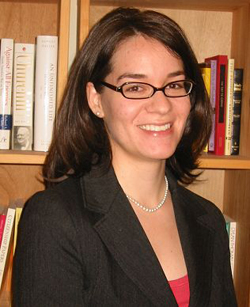Filed Under > Quoted & Noted
Scott-Clayton Proposes Changes to Pell Grant System
The Assistant Professor at the Community College Research Center proposes major structural changes to improve college student outcomes.
Professor Scott-Clayton and co-author Sandy Baum of the Institute for Higher Education Policy recommend three major Pell Grant reforms to strengthen student success and on-time completion. The Pell Grant was originally designed as a one-size-fits-all voucher intended to serve the needs of recent high school graduates from low-income families. Since the program’s inception in 1972, it has grown to serve a much larger and more diverse population—9.4 million students now receive $35 billion in Pell Grant funds—even as graduation rates for recipients remain stubbornly low. Only about 45 percent of Pell recipients obtain a degree or credential within six years.
Scott-Clayton and Baum propose three major structural reforms to improve outcomes for Pell recipients. First, the authors argue that financial assistance alone will not help high-need students complete college: “Handing students money and expecting them to steer their own courses through the maze of available options is an insufficient strategy for supporting their success.” Instead, they propose that the program’s financial assistance should be supplemented with guidance and support services that have been shown to improve academic outcomes.
Scott-Clayton and Baum suggest that the Pell Grant program provide services tailored to meet the needs of the different populations it serves: younger, dependent students would receive personalized, technology-assisted outreach and coaching services from initial application through the first year of college; adult, independent students—who often are returning to college to obtain specific career-related credentials—would receive third-party pre-enrollment counseling to help them choose appropriate institutions and programs, as well as one-on-one guidance provided by their institution at least once per year while enrolled.
The authors also recommend that the Pell Grant program simplify the application process by automatically calculating eligibility using information retrieved electronically from tax returns and by making eligibility fixed for several years. Furthermore they argue that eligibility should be based on a simple formula based on income and family size so that students and families can easily calculate in advance what college costs will be. Finally, Scott-Clayton and Baum suggest strengthening incentives for student effort and completion, including larger grants for students who take more credits than the current Pell maximum of 24 per year, and small monetary bonuses for on-time completion.
According to the authors, the proposal would require only a minimal increase in funding. For instance, providing each Pell recipient with technology-assisted guidance and counseling worth $500—which research evidence suggests would have meaningful impacts on student outcomes—would cost $1.3 billion, less than 4 percent of current Pell spending. If not additional funds are available, services could be financed by setting the per credit award size to maintain cost neutrality.
---------
Read coverage of the proposals by Inside Higher Ed
Read coverage of the proposals by The Chronicle of Higher Education
A link to the full study is here: Redesigning the Pell Grant Program for the Twenty-First Century
Scott-Clayton spoke with the New York Times about a new higher education ranking system: Lists That Rank Colleges’ Value Are on the Rise
Published Thursday, Oct. 31, 2013
